History
The park was created in 1923 by the former company of the Panama Canal, as the Experimental Farm Summit, to test the adaptation of plants’ species from different parts of the world to the tropical climate of Panama. It was through this experimental farm that teak was introduced to the American continent. [1]
In the 1960s a small zoo was started within the Botanical Garden. The zoo has increased gradually, and today is home to about 300 animals. One of the attractions of the zoo is the harpy eagle; the national bird of Panama.
The land was transferred back to Panama as part the Torrijos–Carter Treaties, and was part of the Soberanía National Park created by Executive Decree No. 13 on May 27, 1980. [2] [3] In 1985, the area covered by this park was transferred to the administration of the Mayor’s office of Panama, thus establishing the Municipal Park and part of the restructured area into a Botanical Garden, converting it into a research center for development of tropical biology and horticulture. [2]

The harpy eagle is a neotropical species of eagle. It is also called the American harpy eagle to distinguish it from the Papuan eagle, which is sometimes known as the New Guinea harpy eagle or Papuan harpy eagle. It is the largest and most powerful bird of prey found throughout its range, and among the largest extant species of eagles in the world. It usually inhabits tropical lowland rainforests in the upper (emergent) canopy layer. Destruction of its natural habitat has caused it to vanish from many parts of its former range, and it is nearly extirpated from much of Central America. In Brazil, the harpy eagle is also known as royal-hawk. The genus Harpia, together with Harpyopsis and Morphnus, form the subfamily Harpiinae.

The Hong Kong Zoological and Botanical Gardens is one of the oldest zoological and botanical centres in the world, and the oldest park in Hong Kong. Founded in 1864, its first stage was opened to the public in 1871. It occupies an area of 5.6 hectares, in Central, on the northern slope of Victoria Peak.

The Oakland Zoo is a zoo located in the Grass Valley neighborhood of Oakland, California, United States. Established on June 6, 1922, it is managed by the Conservation Society of California, a 501(c)(3) non-profit organization dedicated to the conservation of wildlife both locally and globally. The zoo is home to more than 850 native and exotic animals and is a member of the Association of Zoos and Aquariums (AZA).

The Los Angeles Zoo and Botanical Gardens is a 133-acre (54 ha) zoo founded in 1966 and located in Los Angeles, California, United States. The city of Los Angeles owns the zoo, its land and facilities, and the animals.
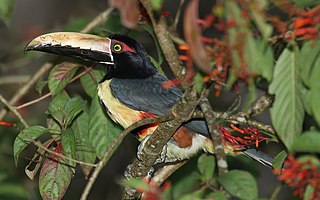
Darién National Park is a World Heritage Site in Panama. It is about 325 kilometers (202 mi) from Panama City, is the most extensive of all national parks of Panama, and is one of the most important World Heritage Sites in Central America.

Guyana Zoo is a zoo located in Georgetown, the capital of Guyana. The zoo officially opened in 1952, but its grounds had been used as botanical gardens since 1895. Some of its most popular attractions are harpy eagles and manatees.

Caparaó National Park is a national park created in 1961 to protect the Caparaó Mountains, located on the border between Minas Gerais and Espírito Santo states in Brazil. Pico da Bandeira, one of the highest mountains in Brazil, is located there.

Henri Pittier National Park is the oldest national park in Venezuela, originally created in 1937 under the name of Rancho Grande by decree of President Eleazar López Contreras. In 1953 the park was renamed in honor of Henri Pittier, a distinguished Swiss geographer, botanist and ethnologist, who arrived in Venezuela in 1917, classified more than 30,000 plants in the country and devoted many years studying the flora and fauna in the park.
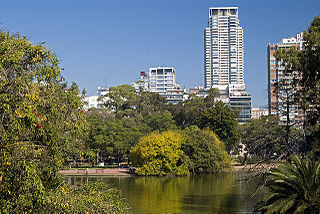
Parque Tres de Febrero, popularly known as Bosques de Palermo, is an urban park of approximately 400 hectares located in the neighborhood of Palermo in Buenos Aires, Argentina. Located between Libertador and Figueroa Alcorta Avenues, it is known for its groves, lakes, and rose gardens.

The Fukuoka Municipal Zoo and Botanical Garden, also known as the Fukuoka City Zoological Garden, is a zoo and botanical garden established in 1953 and located within Minami-koen at 1-1, Minami-Koen, Chūō-ku, Fukuoka, Fukuoka, Japan.
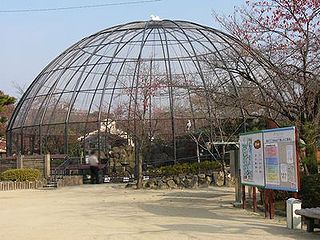
Kyoto City Zoo (京都市動物園) is a zoo located in Sakyō ward, Kyoto and was established in 1903, making it the second oldest zoo in the country after Ueno Zoo in Tokyo.

The Central Florida Zoo and Botanical Gardens is a 116-acre (47 ha) zoo and botanical garden located north of Orlando, Florida in Sanford. As a not-for-profit organization, it is a leader in conservation, providing experiences that inspire actions on behalf of wildlife. The Zoo has been an accredited member of the Association of Zoos and Aquariums (AZA) since 1986.

Soberanía National Park is a national park in Panama near the banks of the Panama Canal in the provinces of Panamá and Colón, some 25 kilometres (16 mi) from Panama City. The Chagres River runs through the park. Established as a national park in 1980, the park covers 55,000 acres (220 km2).
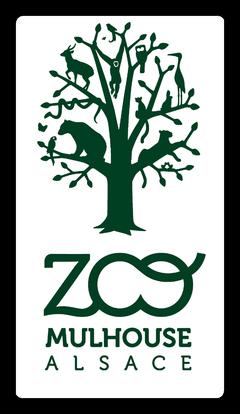
The Mulhouse Zoological and Botanical Park is a French zoological park located in the Grand Est region in the departement of Haut-Rhin, in the southeast of the city of Mulhouse, district of Rebberg. Created in 1868 by philanthropists industrialists, led by Charles Thierry-Mieg son, he was successively the property of the Cercle mulhousien, of the Industrial Society of Mulhouse, and then of the City from 1893. It is now managed by the agglomeration community of Mulhouse region, Mulhouse Alsace Agglomération. Its director is, since 2010, the veterinary Brice Lefaux.
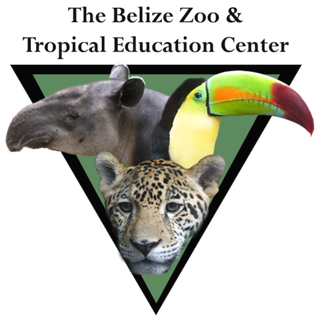
The Belize Zoo and Tropical Education Center is a zoo in Belize, located some 47 kilometres (29 mi) west of Belize City on the Western Highway. Set in 12 hectares, the zoo was founded in 1983 by Sharon Matola. It is home to more than 175 animals of about 48 species, all native to Belize. The natural environment of Belize is left entirely intact within the zoo. The dense, natural vegetation is separated only by gravel trails through the forest. The Belize Zoo and Tropical Education Center receives over 68,000 visitors annually, with 15,000 being students, teachers, and parents.
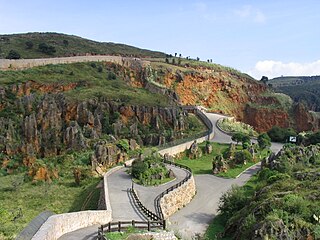
Cabárceno Natural Park is a zoo and nature reserve located in the town of Penagos, Spain, 17 kilometres (11 mi) south of Santander.
Parque Nacional Simón Bolívar is an urban park of approximately 14 hectares, located in downtown San José, Costa Rica. It is the oldest botanical garden and zoo in Costa Rica. The name pays homage to Latin American national founder Simón Bolívar. It is administered by a conservation nonprofit foundation called Fundazoo. All animals in the zoo are orphaned, injured or have been disabled and are nursed back to health in hopes of releasing them.

The Exotic Tropical Flora Park Also Exotic Tropical Flora Park and Our lady of Carmel Mission Is the name given to a complex formed by an old Catholic mission transformed into a museum, a Catholic chapel and a 10.5-hectare (26-acre) botanical garden with more than 2,500 varieties of plants from Colombia, Ecuador, Brazil, Panama, Nicaragua, Madagascar, Costa Rica, Thailand, Singapore, China and Australia, mainly heliconias, gingers, bromeliads and orchids arranged in a journey of 4.5 kilometers located in the valley of the Yaracuy River, in the homonymous state of Venezuela.

















